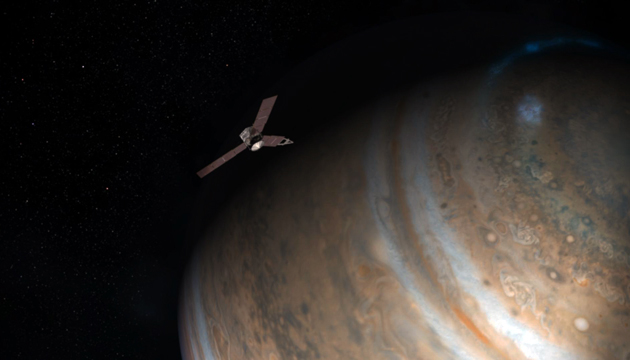
Flash! On October 9, the Earth was visited by an interplanetary spacecraft! No, this is not a scene from “The Day the Earth Stood Still” or “War of the Worlds,” but a flyby maneuver by NASA’s latest Jupiter probe, Juno.
Juno was launched on August 5, 2011 on an Atlas 551 rocket into the first leg of its journey to Jupiter. This looping trajectory took it as far as the Asteroid Belt just beyond the orbit of Mars, and then back toward the Earth again. The Earth flyby on October 9 was a “gravitational assist” or “slingshot” maneuver. It imparted a small amount of Earth’s momentum to Juno, boosting its velocity to put it on a final course to Jupiter.
When it arrives there in 2016, Juno will become only the second spacecraft to orbit Jupiter, and the first to fly over Jupiter’s polar regions, providing us with a breathtaking view that we haven’t seen before.
The first probe to orbit Jupiter, back in 1995, was the Galileo spacecraft, named in honor of Galileo Galilei, who first studied Jupiter with a telescope. Juno bears its own homage to Galileo: a plaque imprinted with the man’s self-portrait and a hand-written passage he made on his observation of Jupiter.
Juno’s overarching purpose is to give us a better understanding of Jupiter’s origins and its evolution over time by probing beneath its cloud tops and discovering properties and processes held secret in Jupiter’s interior. And what we learn will tell us more than just Jupiter’s inner workings, but of the early conditions in the formation of our solar system itself, and how Jupiter’s influence may have shaped it.